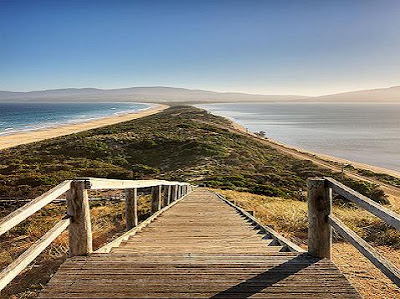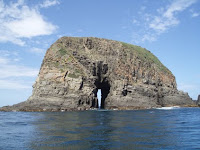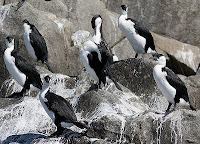Bruny Island is an island off the south eastern coast of Tasmania, from which it is separated by the D'Entrecasteaux Channel. Storm Bay is located to the island's northeast. Both the island and the channel are named after French explorer Bruni d'Entrecasteaux. Its traditional Aboriginal name was Alonnah Lunawanna, which survives as the name of two island settlements, Alonnah and Lunawanna. The details of Bruny Island are explained in world tour guides below.
 Geologically, Bruny Island is actually two islands North Bruny and South Bruny that are joined by a long, narrow sandy isthmus. The holiday village of Dennes Point is located in North Bruny, while South Bruny is the site of the towns of Alonnah, Adventure Bay and Lunawanna. The Bruny Island is one of the tourist attraction and travel destinations to visit.
Geologically, Bruny Island is actually two islands North Bruny and South Bruny that are joined by a long, narrow sandy isthmus. The holiday village of Dennes Point is located in North Bruny, while South Bruny is the site of the towns of Alonnah, Adventure Bay and Lunawanna. The Bruny Island is one of the tourist attraction and travel destinations to visit.Outside its settlements the island is covered in grazing fields and large tracts of dry eucalyptus forest. Inland forests continue to be logged, but other large sections mostly along the southeastern coast are preserved as the South Bruny National Park. While the seaward side of the island features two long beaches Adventure Bay and Cloudy Bay it is for the most part extremely rugged, with cliffs of dolerite that tower over 200 metres above sea level, and which are amongst the highest sea cliffs in Australia. Brunys channel side is far more sheltered and a favourite fishing and recreational boating area for local and interstate visitors.
The island is accessed by vehicular ferry, funded by the State Government. Since 1954, four vessels have operated the Bruny Island Ferry service between the island and Kettering on the mainland. The service is currently plied by the Mirambeena, which is unusual for using a Voith Schneider propulsion system rather than a conventional propeller.
Bruny Island was originally inhabited by the Aborigines until European arrival, although there is still a large community of people who identify as Aboriginal. Abel Tasman tried to land in the vicinity of Adventure Bay in November 1642. In 1773 Tobias Furneaux discovered and named Adventure Bay; four years later on 26 January 1777 James Cook's two ships, the Resolution and Discovery stayed in the bay for two days. Cook carved his initials in a tree that was destroyed in a 1905 bushfire and is now commemorated by a plaque. In 1788 and again in 1792 William Bligh anchored in Adventure Bay.

 The island itself however is named after the French explorer Bruni d'Entrecasteaux who explored the Channel region in 1792. It was known as Bruni Island until 1918, when the spelling was changed to Bruny. Since then the island has become known as a holiday location with surfing beaches, National Parks and historical sites. In more recent history the Bruny Island was the site of a land transfer by the state Government to local Aboriginal people.
The island itself however is named after the French explorer Bruni d'Entrecasteaux who explored the Channel region in 1792. It was known as Bruni Island until 1918, when the spelling was changed to Bruny. Since then the island has become known as a holiday location with surfing beaches, National Parks and historical sites. In more recent history the Bruny Island was the site of a land transfer by the state Government to local Aboriginal people.A key contributor to Bruny Island's economy is its growing tourism industry. Being home to the South Bruny National Park, tourism on the island centres around the showcase of its natural assets. The Cape Bruny Lighthouse on 1838 is an iconic Australian lighthouse and was the oldest continuous lighthouse under operation by the Commonwealth. Now out of service, it has been transferred to the Tasmanian Government and is part of the South Bruny National Park. The main areas of Bruny Island or townships are Adventure Bay, Alonnah, Barnes Bay, Cloudy Bay, Dennes Point, Fluted Cape, Lunawanna and Simpsons Bay.
Post Title
→Bruny Island
Post URL
→https://guidice-galleries.blogspot.com/2010/05/bruny-island.html
Visit guidice galleries for Daily Updated Wedding Dresses Collection








